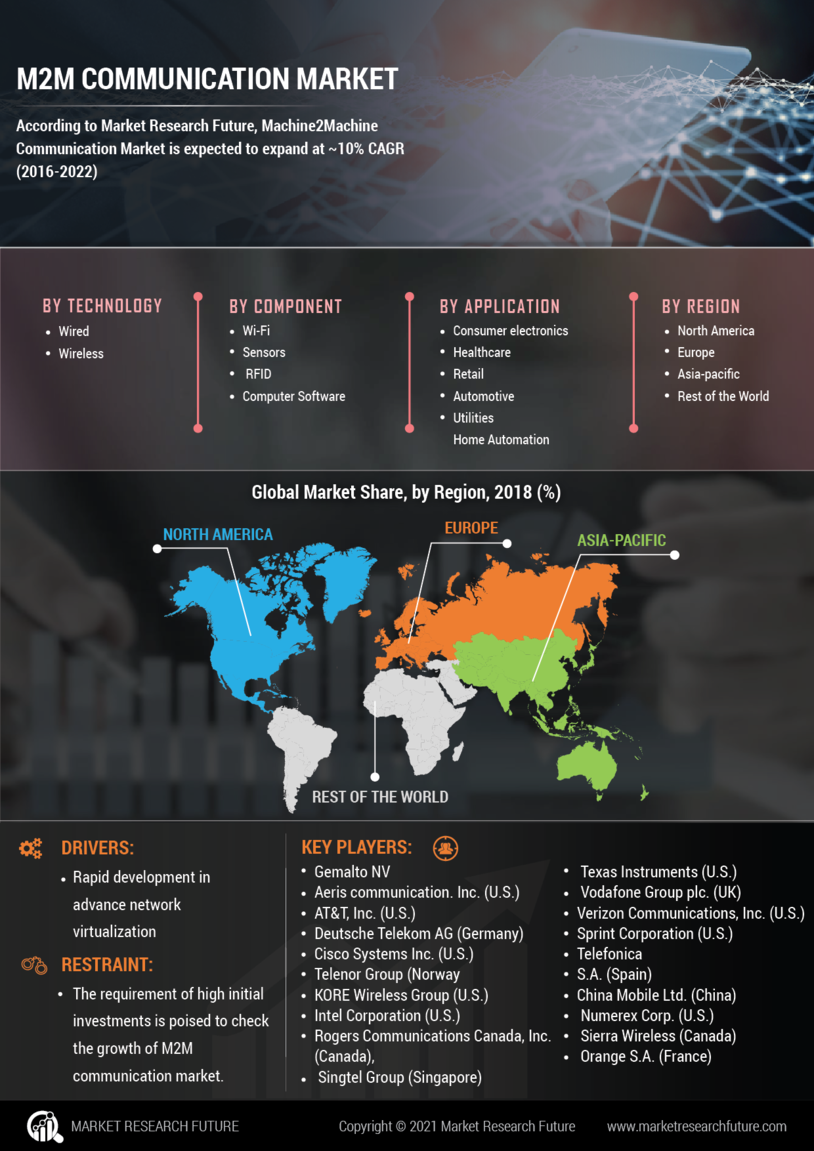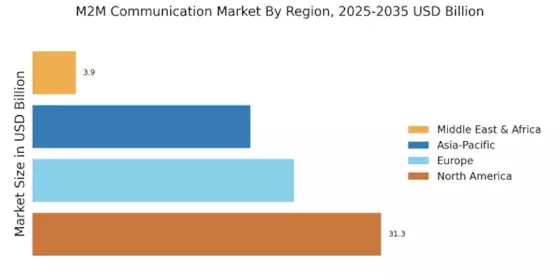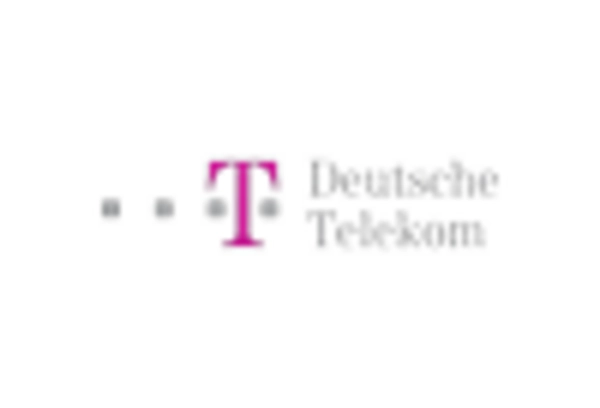Expansion of Smart Cities
The M2M Communication Market is significantly influenced by the expansion of smart cities, which are increasingly integrating advanced technologies to improve urban living. Smart city initiatives often rely on M2M communication to connect various systems, such as traffic management, waste management, and public safety. Recent estimates suggest that investments in smart city projects could reach over 1 trillion dollars by 2025. This investment is expected to drive the adoption of M2M solutions, as cities seek to enhance efficiency and sustainability. The interconnectedness facilitated by M2M communication allows for better resource management and improved quality of life for residents. As urban areas continue to grow, the M2M Communication Market is poised to benefit from this trend, with numerous projects underway worldwide.
Rising Demand for Automation
The M2M Communication Market is experiencing a notable surge in demand for automation across various sectors. Industries such as manufacturing, logistics, and agriculture are increasingly adopting automated solutions to enhance operational efficiency. According to recent data, the automation market is projected to grow at a compound annual growth rate of approximately 9% over the next five years. This trend is driven by the need for real-time monitoring and control, which M2M communication facilitates. As businesses seek to optimize processes and reduce human error, the integration of M2M technologies becomes essential. Consequently, this rising demand for automation is likely to propel the M2M Communication Market forward, creating new opportunities for service providers and technology developers.
Growing Focus on Sustainability
The M2M Communication Market is increasingly aligned with the growing focus on sustainability and environmental responsibility. Organizations are recognizing the importance of reducing their carbon footprint and improving resource efficiency. M2M communication plays a crucial role in this endeavor by enabling smart energy management systems, waste reduction strategies, and optimized supply chains. Recent studies indicate that companies implementing M2M solutions can achieve up to a 30% reduction in energy consumption. As sustainability becomes a priority for businesses and consumers alike, the demand for M2M technologies is expected to rise. This trend not only supports environmental goals but also enhances corporate reputation, making the M2M Communication Market a key player in the transition towards a more sustainable future.
Advancements in Wireless Technologies
The M2M Communication Market is being propelled by advancements in wireless technologies, which are enhancing connectivity and data transmission capabilities. Technologies such as 5G are expected to revolutionize M2M communication by providing faster speeds and lower latency. This is particularly relevant for applications requiring real-time data exchange, such as autonomous vehicles and remote healthcare monitoring. The rollout of 5G networks is anticipated to reach widespread availability by 2026, further stimulating the M2M Communication Market. As these technologies evolve, they enable more sophisticated applications and services, thereby attracting investments and fostering innovation within the sector. The potential for enhanced connectivity is likely to drive the adoption of M2M solutions across various industries.
Increased Investment in Healthcare Technologies
The M2M Communication Market is witnessing increased investment in healthcare technologies, driven by the need for improved patient care and operational efficiency. Telemedicine, remote patient monitoring, and connected medical devices are becoming integral components of modern healthcare systems. The M2M Communication Market is projected to reach over 250 billion dollars by 2027, indicating a robust growth trajectory. M2M communication facilitates the seamless exchange of health data, enabling healthcare providers to monitor patients in real-time and make informed decisions. This trend is likely to enhance the quality of care while reducing costs, thereby attracting further investments in M2M solutions. As the healthcare sector continues to evolve, the M2M Communication Market stands to benefit significantly from these advancements.


















Leave a Comment